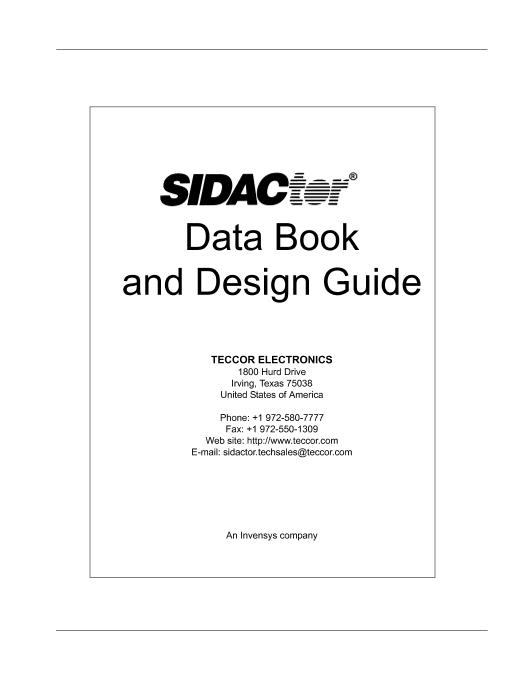
B1101U
| Model | B1101U |
| Description | solid state crowbar devices |
| PDF file | Total 212 pages (File size: 2M) |
| Chip Manufacturer | TECCOR |

Overvoltage Protection Comparison
Overvoltage Protection Comparison
The four most commonly used technologies for overvoltage protection are:
•
SIDACtor
devices
• Gas Discharge Tubes (GDTs)
• Metal Oxide Varistors (MOVs)
• TVS diodes
All four technologies are connected in parallel with the circuit being protected, and all exhibit
a high off-state impedance when biased with a voltage less than their respective blocking
voltages.
SIDACtor
devices
A
SIDACtor
device is a PNPN device that can be thought of as a TVS diode with a gate.
Upon exceeding its peak off-state voltage (V
DRM
), a
SIDACtor
device will clamp a transient
voltage to within the device’s switching voltage (V
S
) rating. Then, once the current flowing
through the
SIDACtor
device exceeds its switching current, the device will crowbar and
simulate a short-circuit condition. When the current flowing through the
SIDACtor
device is
less than the device’s holding current (I
H
), the
SIDACtor
device will reset and return to its
high off-state impedance.
Advantages
Advantages of the
SIDACtor
device include its fast response time (Figure 5.3), stable
electrical characteristics, long term reliability, and low capacitance. Also, because the
SIDACtor
device is a crowbar device, it cannot be damaged by voltage and it has extremely
high surge current ratings.
Restrictions
Because the
SIDACtor
device is a crowbar device, it cannot be used directly across the
AC line; it must be placed behind a load. Failing to do so will result in exceeding the
SIDACtor
device’s surge current rating, which may cause the device to enter a permanent
short-circuit condition.
Applications
Although found in other applications,
SIDACtor
devices are primarily used as the principle
overvoltage protector in telecommunications and data communications circuits. For
applications outside this realm, follow the design criteria in "SIDACtor Device Selection
Criteria" on page 5-5.
Gas Discharge Tubes
Gas tubes are either glass or ceramic packages filled with an inert gas and capped on each
end with an electrode. When a transient voltage exceeds the DC breakdown rating of the
device, the voltage differential causes the electrodes of the gas tube to fire, resulting in an
arc, which in turn ionizes the gas within the tube and provides a low impedance path for the
http://www.teccor.com
+1 972-580-7777
5 - 10
SIDACtor
®
© 2002 Teccor Electronics
Data Book and Design Guide


























































































































































































































